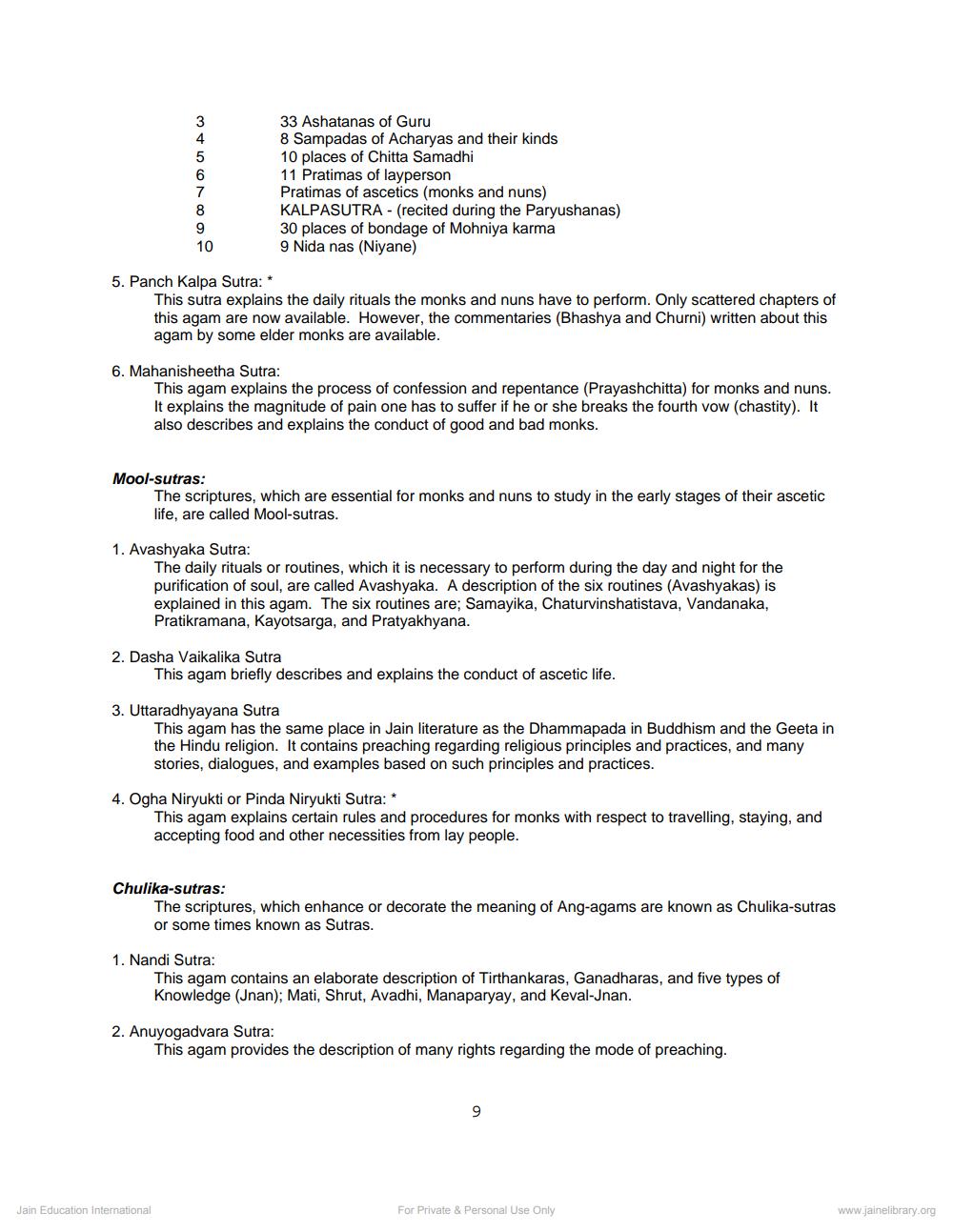________________
600 VOUW
33 Ashatanas of Guru 8 Sampadas of Acharyas and their kinds 10 places of Chitta Samadhi 11 Pratimas of layperson Pratimas of ascetics (monks and nuns) KALPASUTRA - (recited during the Paryushanas) 30 places of bondage of Mohniya karma 9 Nida nas (Niyane)
5. Panch Kalpa Sutra: *
This sutra explains the daily rituals the monks and nuns have to perform. Only scattered chapters of this agam are now available. However, the commentaries (Bhashya and Churni) written about this agam by some elder monks are available.
6. Mahanisheetha Sutra:
This agam explains the process of confession and repentance (Prayashchitta) for monks and nuns. It explains the magnitude of pain one has to suffer if he or she breaks the fourth vow (chastity). It also describes and explains the conduct of good and bad monks.
Mool-sutras:
The scriptures, which are essential for monks and nuns to study in the early stages of their ascetic life, are called Mool-sutras.
1. Avashyaka Sutra:
The daily rituals or routines, which it is necessary to perform during the day and night for the purification of soul, are called Avashyaka. A description of the six routines (Avashyakas) is explained in this agam. The six routines are; Samayika, Chaturvinshatistava, Vandanaka, Pratikramana, Kayotsarga, and Pratyakhyana.
2. Dasha Vaikalika Sutra
This agam briefly describes and explains the conduct of ascetic life.
3. Uttaradhyayana Sutra
This agam has the same place in Jain literature as the Dhammapada in Buddhism and the Geeta in the Hindu religion. It contains preaching regarding religious principles and practices, and many stories, dialogues, and examples based on such principles and practices.
4. Ogha Niryukti or Pinda Niryukti Sutra:
This agam explains certain rules and procedures for monks with respect to travelling, staying, and accepting food and other necessities from lay people.
Chulika-sutras:
The scriptures, which enhance or decorate the meaning of Ang-agams are known as Chulika-sutras or some times known as Sutras.
1. Nandi Sutra:
This agam contains an elaborate description of Tirthankaras, Ganadharas, and five types of Knowledge (Jnan); Mati, Shrut, Avadhi, Manaparyay, and Keval-Jnan.
2. Anuyogadvara Sutra:
This agam provides the description of many rights regarding the mode of preaching.
Jain Education International
For Private & Personal Use Only
www.jainelibrary.org




